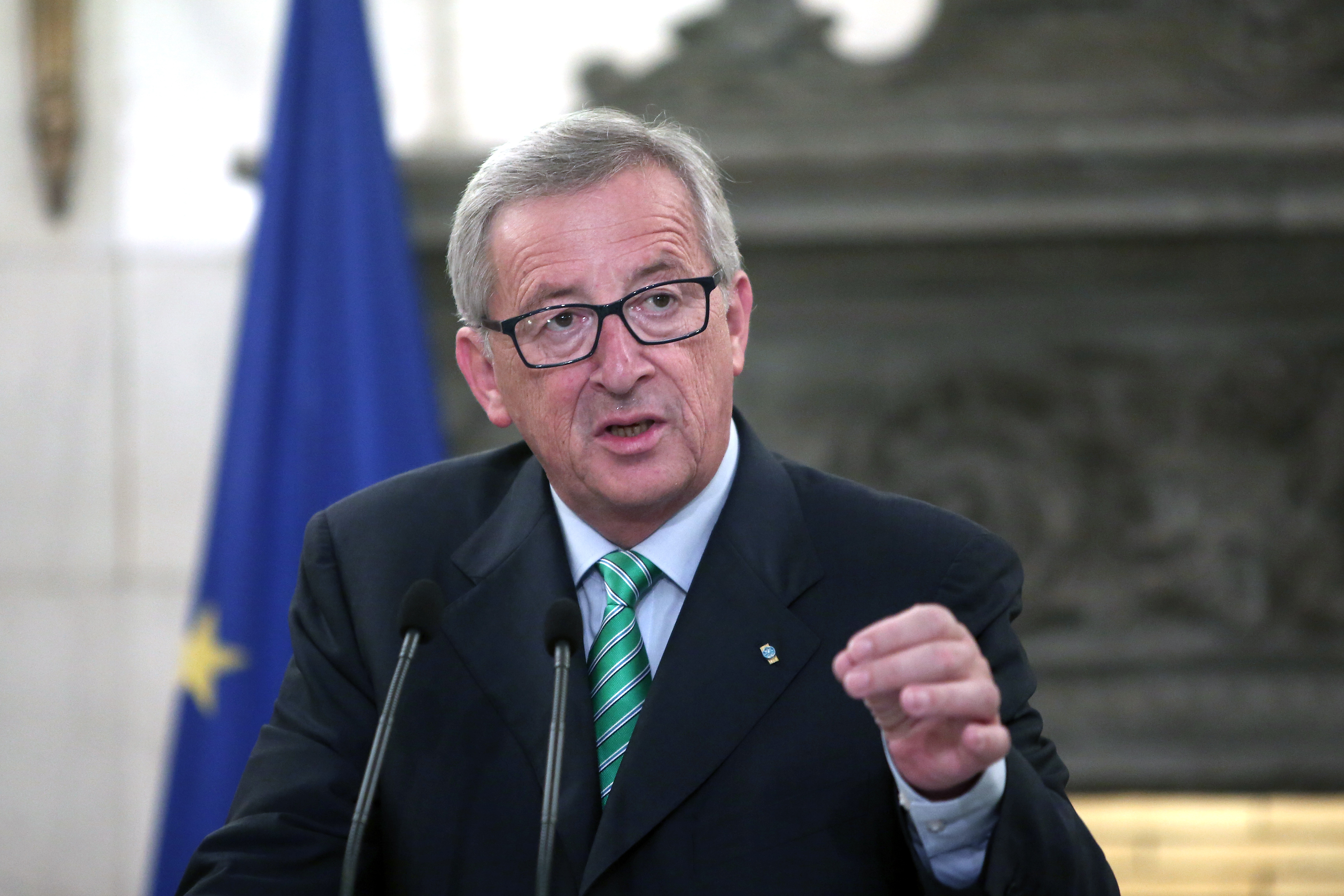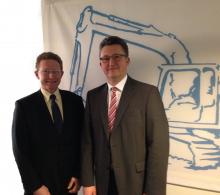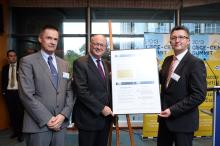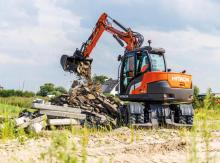
While worldwide for 2015 a crystalball would be helpful, in Europe the sector has already listed specific priorities it wants to tackle, and among these are the upcoming emissions regulations (see separate story), external trade and access to foreign markets, and market surveillance.
And an infrastructure investment package worth some €300 billion, unveiled by European Commission President, Jean- Claude Juncker, can only help construction equipment manufacturers, as can other major construction investments throughout the region. But one of the more telling statements on where we are at in Europe, and elsewhere, came at the
Indeed, agility, and the need to be flexible, was a recurring theme of the congress as speakers emphasised that since the economic events of eight years ago, the world is now a much different place in which to do business. CECE is well placed to review and respond to such changes, representing and promoting the European construction equipment and related industries towards the European Institutions; coordinating the views of national sector associations and their members, and working with other organisations worldwide to achieve “a fair, competitive environment via harmonised standards and regulations.”
The European construction equipment industry consists of around 1,200 companies and employs 130,000 persons directly, with the same number in sales and services, and in 2013 had a turnover of €25 billion from European production.
CECE is a network of 16 member associations in 14 countries, including Russia and Turkey, and holds office in Brussels, the Belgian capital, and seat of European Union (EU) power.
“A strong industrial manufacturing base is important for economic resilience and growth,” says Eric Lepine, CECE president, who is managing director of
Dr Rikard Mäki, director, technology planning and public funding,
For example, real-time communication is an enabler for active safety; site automation; site resource utilisation optimisation; optimised energy consumption, and machine awareness of surroundings.
While connected vehicles are coming soon, there will be challenges to manage and several areas require industry collaboration, including investment and product cost; system reliability; system compatibility (mixed fleets); standardisation, and regulations.
As part of the 2020 Strategy for Smart, Sustainable and Inclusive Growth, the EU vowed to lift the share of industry in Europe’s gross domestic product (GDP) to 20% by 2020. However, the ratio of industrial production appears to be developing negatively rather than positively, from 16% in 2011 to 15.1% in 2013.
“We fear that this issue will be downplayed. To win in Europe, we will need a concerted effort by business, policymakers and other stakeholders in society,” says Lepine. Late last year he underlined that the construction equipment industry is willing to play an active part in reaching the goals set by the EU, but EU policy-makers must set the right framework conditions, providing business with planning certainty, coherent policies, access to finance, room for innovation and facilitating the access to foreign markets.
“We urge the European Commission to confirm and even upgrade the industrial production target...,” says Lepine.
Investment in infrastructure in Europe will also be necessary to boost sales of construction equipment, and the CECE welcomes the €300 billion investment package unveiled by Commission President Juncker (see separate story). “We are happy that the machinery industry has now been included in the TTIP negotiations between the US and the European Union,” says Lepine.
The TTIP (Transatlantic Trade and Investment Partnership) is primarily a deal to cut tariffs and regulatory barriers to trade between the US and European Union countries and to make it easier for companies on both sides of the Atlantic to access each other’s markets.
The construction equipment industry will benefit in particular when it comes to regulatory convergence and harmonisation of technical and environmental requirements applying to machines, to public procurement liberalisation and to third world countries’ market access for remanufactured products.
If successfully negotiated, business would be made easier and costs reduced for manufacturers acting on a global scale and for customers alike.
There would no longer be the need to provide additional certificates, testing procedures and documentation. Change of klmachinery components and constructive adaptions of the machines could be done more easily.
According to calculations made by one of the CECE member companies, costs of a machine for the US market today are more than 17% higher than those for the same machinery type operating in Europe.
Meanwhile, the star performer among the European construction equipment markets in 2014 continued to be the UK, where earthmoving equipment sales grew by 44% in the first half of the year compared to the same period a year before.
Among initiatives, JCB Finance saw a new £60 million (€76 million) fund to support construction machinery purchases, which was launched as a survey revealed UK builders are at their busiest for 20 years.
“Our new Buy Now Pay Later scheme for machines delivered by 31 December, 2014, will help reduce our customers’ bills and improve their cash flow as payments only need to start in March 2015,” says Paul Jennings, JCB Finance managing director.
The Construction Products Association (CPA) envisages a 5.3% growth in construction output in 2015, primarily due to a recovery in private housing and commercial sectors, in addition to a return to growth in the public sector, but in comparison, the British Chambers of Commerce predicts UK economic growth of 2.7%.
Further figures from the CPA, in its Construction Industry Forecasts 2014-2018 (Autumn 2014 edition), predict private housing starting to rise 10% in 2015 (18% in 2014); public sector construction rose by 0.9% in 2014 following five years of falls in output; roads construction to rise 46.1% by 2018, and energy infrastructure to grow 118.2% by 2018.
“In the long-term, growth rates are projected to slow to 3.7% per year, on average, between 2016 and 2018. These slower rates of growth reflect policy uncertainty following the May 2015 General Election, which may have an adverse impact upon construction output,” says the CPA in its report.
Apart from the UK, other Northern and Western European countries all recorded a robust growth in construction equipment sales as well, says CECE, while the Central and Eastern European countries developed unevenly with the Russian market continuing its heavy downturn due to the political situation, and also because of a cyclical downturn in the construction equipment industry.
In addition, players from Asia increasingly expand their business, although Turkey, once a promising market for the industry, saw double-digit declines for the fourth consecutive quarter.
CECE also noted that for the first time after the long dry spell, construction equipment sales in the Southern European countries including Italy, Spain and Portugal improved notably, “signalling that the European construction sector is now stabilising after having hit the bottom, with positive effects on the construction equipment market.”
However, the majority of European construction equipment manufacturers report growing incoming orders, particularly from non-European countries, especially the Middle East, with Saudi Arabia being the growth engine in the region.
In terms of product groups, road equipment proved to be the best performing construction equipment sub-sector.
WORLD’S TOUGHEST EMISSIONS RULES
New regulations from the EC will see exhaust emissions on off-road construction equipment reduced dramatically by 2020.The European Commission has published its long-anticipated proposal on exhaust emissions that will set standards for construction equipment and other machinery that are the strictest in the world.
It involves a revision of the Directive 97/68/ EC covering exhaust emissions reduction for engines installed in non-road mobile machinery (NRMM), setting standards for construction equipment and other machinery that are the strictest in the world.
The EC says the planned measures will cut emissions of major air pollutants from the relevant engines and cut the complexity of the legal framework for the sector. At the same time, it sets out harmonised rules for placing those engines on the EU market.
Compared to vehicles for use on roads, NRMM covers a very wide variety of machinery typically used off the road in manifold applications.
In the construction equipment sector the regulation applies to a wide variety of machines: from hand-held equipment to the largest mining machine; used to erect houses; build infrastructure; operate quarries, and provide emergency relief when natural disaster strikes. Even railcars, locomotives and inland waterway vessels fall under the scope of NRMM.
While CECE has welcomed the plans, it has called for calls for a balance between competitiveness and environment.
“We welcome that highly essential requirements are met, such as a predictable introduction pace and emission limits that acknowledge the vast technological progress made in the industry,” says Eric Lepine.
Indeed, CECE says the proposal needs further studying and refining, in particular with regard to further provisions for replacement engines and the concerns of niche equipment manufacturers.
It emphasises that the European construction equipment industry is working hard to provide its customers with machines offering the highest productivity and lowest environmental impact, but delivering the next generation of machines to the market in time “will remain a complex challenge.”
The EC says that besides improving air quality throughout the EU, the new proposal provides the NRMM sector with a predictable and stable regulatory framework that is fit for the future: a clear focus in this context was therefore put on international alignment of technical requirements, particularly with a view to bringing those of the EU and the US closer together. This will ensure a level playing field for European industry and avoid unfair competition from low-cost imports of non-regulated machinery.
Beyond that, the proposal is expected to alleviate the pressure on individual Member States for additional regulatory action at national level that would eventually hamper the internal market.
Key elements of the regulation for the sector are introductory dates of 2019-2020; limit values that will reduce emissions to extremely low levels, and an unprecedented rate of introduction across the entire power range of equipment, irrespective of combustion cycle and fuel.
“By simplifying the existing legislation, improving transparency and lightening the administrative burden, today´s proposal contributes to the competitiveness of European industry. We aim to help non-road mobile machinery suppliers, a key industrial sector, to reap the full benefits of the internal market and to help EU enterprises to be more successful abroad,” says Ferdinando Nelli Feroci, Commissioner for Industry and Entrepreneurship.
“At the same Better Surveillance
The presence of non-compliant machines on the market, and thus of unfair competition, has been a concern for the sector for many years.
Some companies spend 70% of their R&D to comply with EU directives on environment, safety and other technical requirements of European legislation. “The legislation must therefore be properly enforced and policed,” says Eric Lepine.
According to a CECE survey, one out
of three companies faced losses in sales
because customers opted for a noncompliant machine.
In February 2013, the European Commission issued a legislative proposal which was amended by the European Parliament. But since then, the package is blocked in the EU Council and no change is expected before March 2015.
“This is a situation we regret, especially because only such slow progress is made here.”
CECE is calling on the new European Commission to include the issue in its new agenda for jobs and growth. The wellfunctioning and protection of the internal market is key for achieving the EU growth agenda.
“Furthermore, restoring the level playing field in the Single Market through an improved market surveillance system will enable a shift from price competition to a competition on quality, reliability and efficiency.”time, our proposal will lead to a very significant reduction of air pollution emissions and hence protect the health of European citizens. Good for business and good for the environment.”
The work started off with a public stakeholder consultation in January 2013, and included regular and intensive consultation of all the relevant stakeholders, including Member States, associations, industries and NGOs.
According to the EC, engines installed in NRMM contribute significantly to air pollution and are accountable for roughly 15% of the nitrogen oxide (NOx) and 5% of the particulate matter (PM) emissions in the EU.
Moreover, studies indicate that their relative contribution to the total NOx emissions could become bigger over time, should efforts and technical progress in the on-road sector not be carried over to NRMM.
Against this background, the Commission has proposed more stringent emission limits for the placing on the market of new engines installed in NRMM.
In this way, NRMM with older, more polluting engines will be replaced over time, resulting in “a very significant emission reduction overall.”
The new regulation addresses major air pollutants: nitrogen oxides (NOx), hydrocarbons (HC), carbon monoxide (CO) and particulate matters. As for the latter, it introduces in most engine categories (for the first time ever in the NRMM sector) a limit on particle numbers (PN) complementing the limit on particle mass (PM).
“In this way, emissions of so-called ultrafine particles will also be limited, taking up the most recent conclusive evidence on their adverse health effects,” says the EC.
The new regulations are expected to result in increased use of diesel particulate filters (DPFs) on engine exhausts.
The European construction equipment manufacturers, many of them niche producers or SMEs, already produce the cleanest and safest machinery in the world, but now need economy of scale to stay competitive in a global environment and maintain profitable manufacturing sites in Europe.
“The global market for highly regulated products is in comparative terms quite small. Europe cannot afford to deviate too much from requirements in other ambitious nations in this field”, says Lepine. “We urge the EU to maintain alignment in standards and limits with other regions, notably with the US, and actively promote worldwide alignment.
“Product cycles are long and product diversity is huge, putting a tremendous strain on development time.”
COMMODITY PRICE DROP
CEMA, the European association representing the agricultural machinery industry, says it expects the agricultural machinery market to drop by another 5-10% in 2015.The organisation represents 4,500 manufacturers of agricultural equipment employing directly 135,000 persons and indirectly in the distribution and service network another 125,000 persons.
Following the boom of the past three years, demand for agricultural machinery in Europe weakened in 2014, according to CEMA. “For 2014, we expect the market to be
around 5% below last year’s level,” said Richard Markwell, CEMA president, during a press conference at the EIMA trade show in Bologna, Italy, late last year. Nonetheless, the overall sales volume for 2014 will still represent the second highest level of machinery investment ever achieved by the European farming sector.
With an estimated volume of €26 billion for 2014, the European market will remain at the top position in the world, ahead of the US (€21 billion) and China (€14 billion).
Within the EU, market performance differs substantially: compared to last year, more than half (15) of the 28 member countries showed a lower demand for agricultural machinery in 2014, among them, the two key markets of France and Germany which, taken together, make up around 40% of the total EU market.
The recent decline in both markets has therefore had a major impact on manufacturers’ overall business performance in Europe.
Following last year’s (2013) boom, the market in France has performed particularly weakly in recent months, with investment volumes bouncing back to the long-term average. Italy remains in fourth position in Europe, yet continues to show a slight, though steady market decline.
“We really hope that the Italian farmers will soon be able to catch up again with their investments in advanced technology in order to remain competitive,” says Markwell in light of the persisting low sales levels for new machinery in Italy.
Christoph Wigger, chairman of the CEMA Product Group for large tractors and combine harvesters, and CEMA Secretary General Ulrich Adam commented on the specific market situation for tractors and harvesters following the group’s meeting in Bologna.
Tractors make up one-third of the total European agricultural machinery market, and from January to September 2014, 119,000 new tractors were registered in the EU, which is 4% below the levels observed during the corresponding period in 2013.
“The extraordinary times on the biggest market, France, are over, and the manufacturers strongly feel that,” says Adam.
“At the same time, we are glad to see a recovery in Spain, a market which had dropped considerably in the past few years, as well as a ‘return to normal’ in countries such as Portugal and Greece which had previously gone through a deep recession.”
Tractor sales in Germany, the second largest tractor market in Europe, remained robust, with an expected sales volume of 35,000 units in 2014.
Combine harvesters represent around 6% of the total agricultural machinery market in Europe. Sales dropped by around 9% to 9,600 units in 2014.
“2014 brought challenging conditions on the field for arable farmers in certain regions,” says Adam, referring to the wet harvesting conditions in France and Germany, but also the record harvests in the main crop areas for grains and oilseeds, for instance, in the UK.
“There was an intense use of machines on the field, and we observed a higher lastminute demand in 2014.”
CHALLENGING YEAR AHEAD
Overall market conditions for agricultural machinery in Europe are expected to remain challenging throughout 2015.
Manufacturers see the investment climate among customers adversely affected by the recent drop in agricultural commodity prices. In addition, the new rules for EU subsidy payments under the Common Agricultural Policy (CAP) to be introduced in 2015 will add further uncertainties, especially in Central European countries. As a result, CEMA expects the agricultural machinery market to drop by another 5-10% in 2015.
At the same time, the industry believes that worldwide trends, such as global population growth, urbanisation and climate change, will continue to structurally support demand for high-end farm machine technology in the years ahead.
Juncker's cunning finance plan
Jean-Claude Juncker, former Luxembourg Prime Minister; a specialist in finance, and now the European Commission’s new president, wants to raise €315 billion.
If successful, it is claimed this will create some 1.3 million new jobs over the next three years, and boost many industries, including construction and construction equipment.
The highly ambitious plan aims to entice pension funds, insurance companies and other large investors to finance infrastructure projects in the European Union, and it will top the Commission’s 2015 work programme.
“This is the greatest effort in European history to mobilise the EU’s budget to trigger additional investment, and without changing the rules,” says Juncker, whose investment plan is the centrepiece of his economic agenda.
A project must be a publicprivate partnership (PPP), and the EU’s 28 member states have already submitted a list of projects totalling €1.3 trillion, although some of these projects are already not eligible.
Basically, the EC’s plan seeks to create a European Fund for Strategic Investments, and this will be backed by €16 billion of guarantees from the EU budget and €5 billion from the European Investment Bank (EIB) who will house and manage the fund.
It is hoped that the total €21 billion will be leveraged 15 times over to more than €300 billion, the cash coming from large investors from countries such as China, Singapore, Qatar and Abu Dhabi being targeted.
Few disagree that there is a need for better transport links, power grid connections, superfast broadband, and school and hospital improvements, but the recent economic climate has meant that many such infrastructure improvements have been delayed.
With the new fund expected to be up and running by the middle of 2015, this could well change.







